How To Build An Off Grid Gravity Fed Water System Cheaply
How To Build An Off Grid Gravity Fed Water System Cheaply
An off grid Gravity Fed Water System is a great option for running water. Since many of us off grid dwellers and tiny house owners do not have running water. Yes, you can live without running water. Indoor plumbing has been around a long time but mostly for the wealthy. Your average 16th century English Farmer would have to carry in water. The same still holds true for many parts of the world today.
The system I’m going to show you how to build is not a whole house solution. The principles will scale up, though. This is a cheap and easy solution to get a gravity fed water system for a sink. So this is perfect for doing a few loads of dishes, brushing teeth or hand washing.
Best of all this build is both easy and cheap. I built the system in just a few minutes. I spent the next few days tinkering with it to try to optimize it.
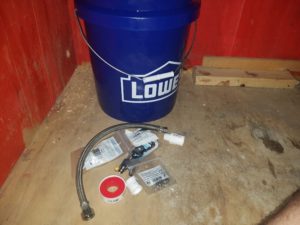
Parts
- Five Gallon Bucket With Lid
- Tubbing
- Threaded PEX connector
- Threaded PVC Piece
- Rubber Washer
- Hose Clamps That Fit The PEX Connector.
- Faucet Connector
- PEX Faucet Shut Off
Some of the parts listed are not specific. Therefore they will vary based on your needs and availability. You can do like I did and stand in the plumbing section of Lowe’s for an hour trying pieces for a fit. Unless you are going to be reducing it’s best to get tubing the same size as your PEX connectors. I believe the tubing I used was 3/8th. That was a very snug fit on the faucet shut-off connector.
You could also just go into the local hardware store and ask for help. If you get a smart employee, yes it happens sometimes, you can be out quickly. Just tell them you’re looking to hook up a hose to a five-gallon bucket.
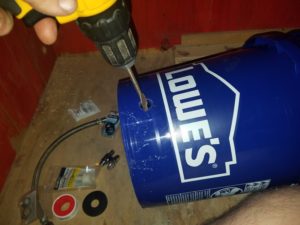
Building The Bucket
Use a paddle bit to drill a hole the size of your threaded piece. In my case, this was 3/8th size hole. Be careful not to let the bit dance. If you do the hole will be bigger than the connector. Also, Plumbers tape will help to a degree.
I had to get a pvc piece that was female on one side and male on the other. Put Teflon tape on the PEX piece and screw into the female side. Use Teflon tape on the male side. Put a rubber washer on.
For inside the bucket, I had a female threaded open piece.
Thread the male connector into the bucket. It should be a tight fit. You want the piece to go all the way into the bucket for the washer to prevent leaks.
On the inside of the bucket, I put another rubber washer on threaded side. That way there is a washer on the inside and outside of the bucket to prevent leaks.
Thread the open female piece on the inside of the bucket. Tighten it as snuggly as you can by hand. Using a wrench would break something for sure.
Preparing The Line
At this point, it’s best to place the bucket where you are going to want it. Take the tubing you have and place on one of your hose clamps. Work the tubing onto the PEX barbed end on the bucket. It will be a really tight fit. This is what we want. When the tubing is all the way on, move the hose clamp to the center of the barb. Tighten the hose clamp. Don’t go crazy tightening it down, you don’t want to crack the PEX barb.
Run the tubing to the sink. It will most likely be too long. I didn’t want to have excess tubing congesting my Gravity Fed Water System. The less distance it travels will help with the pressure. Cut it to be just enough to reach the sink.
Nest put a hose clamp on the tubing and attach to the shut-off valve. And the Shut off piece connects to the faucet connector and that screws onto the sink.
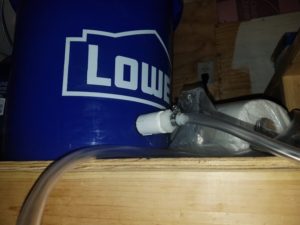
Set Up
At this point, everything should be hooked up for your Gravity Fed Water System. Since this is only going to feed the cold water tap on the faucet. Don’t forget to either plug or shut off the hot water side. I used a faucet connector and shut off valve on it. Therefore the water will just pour out. Ask me how I know.
Now fill the bucket with water. Check for leaks. Also you could use silicone to seal the connector coming out of the bucket. I have not had it leak in weeks of use, though.
Then turn on you shut off valve to the faucet. Check for leaks. If no leaks turn on the faucet. Remember only the cold will work. If water comes out awesome you did it! In the event that the water won’t flow it has air in the line. So we have to get the air out of the line first.
Also you could install a check valve to get the air out. I just squeezed the tubing near the bucket. When you squeeze the tubing it forces the air inside the bucket and fills the line with water. Once the line is completely filled with water it will flow.
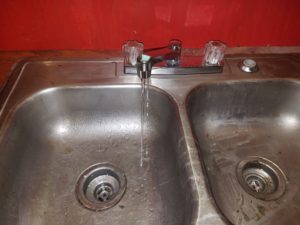
Conclusion
In conclusion, I have been without running water for almost 2 years, living in my tiny house. It isn’t that bad honestly. In particular many things you take for granted are made difficult. Like doing the dishes. So you can’t just rinse off something. The first thing I did after building my Gravity Fed Water System was to do some dishes. Finally It felt great to have running water to do dished with.
I fiddled around trying to get the water pressure to be better with no luck. Also don’t expect any great water pressure. It will flow steadily. But it will flow.
This project cost less than $30 and took less than an hour. As a result, I can turn a faucet and water comes out. For a short term disaster or for those that live off the grid this is a cheap and easy solution. So the next step from this system is rain catchment and a water pump. You could possibly do that for $100. Probably not, though. As an interim to that, this Gravity Fed Water System fills the gap perfectly.
What do you do for water? Have you built a Gravity Fed Water System? Let me know in the comments!
Want to hear yourself on the podcast? Call in with your questions at (615) 657-9104 and leave us a voice mail.
Like this post? Consider signing up for my email list here > Subscribe
Think this post was worth 20 cents? Consider joining The Survivalpunk Army and get access to exclusive content and discounts! |
10 Replies to “How To Build An Off Grid Gravity Fed Water System Cheaply”
Comments are closed.

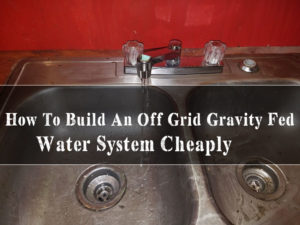




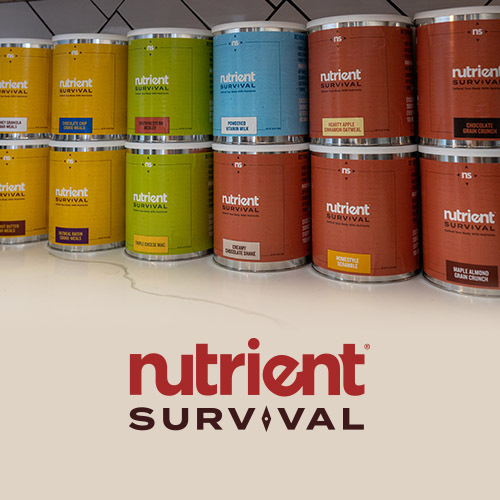
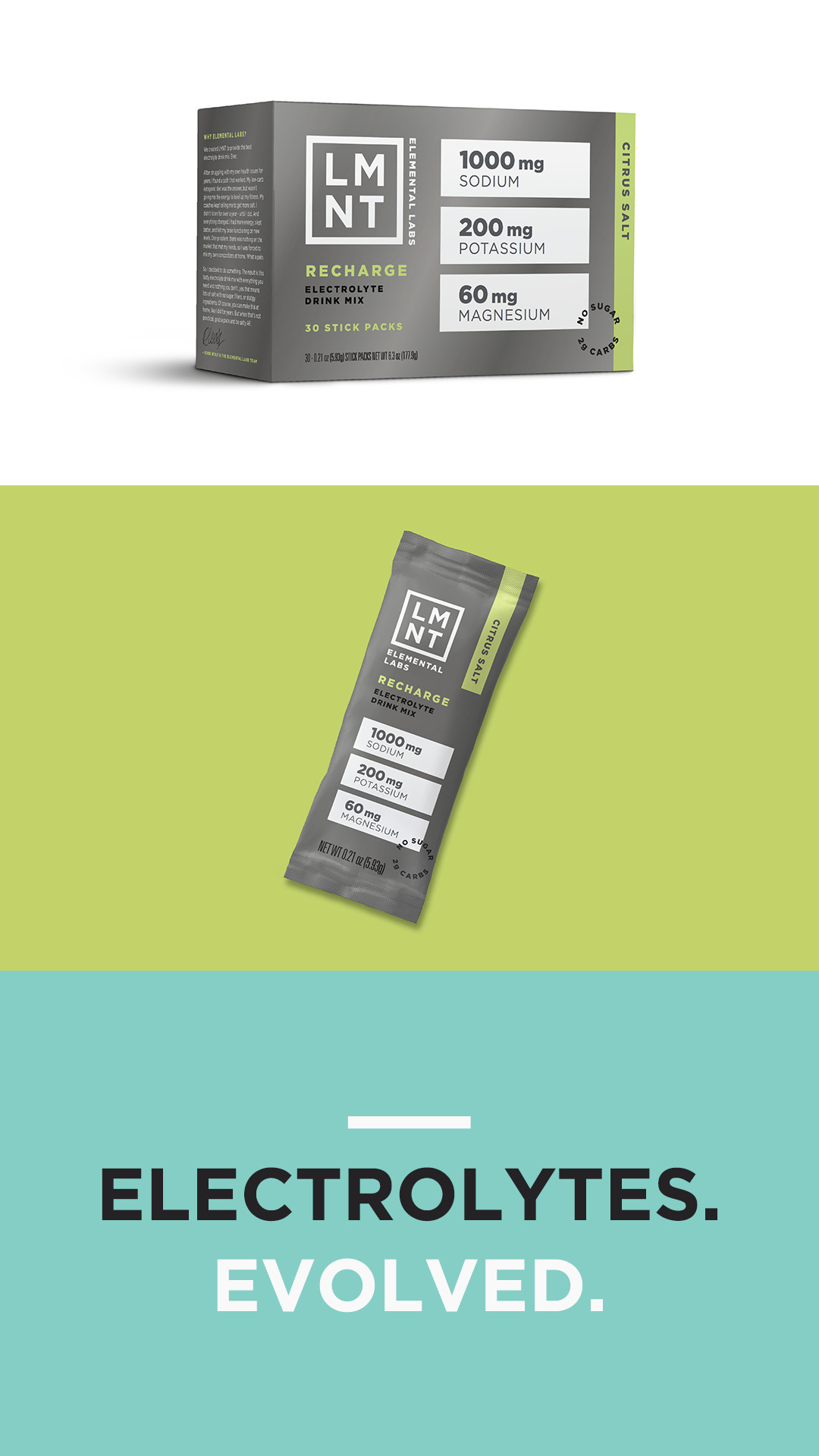












i am living un rural thailand where we dont get water every day. we started using 80L trash cans but if we did not get a chance to top them up some days we were without water. i put a 4000L tank which i bought for 100usd and ran a line off the bottom. the height of the tank generates some ok pressure. i put an auto stop on the incomming line and we almost always have a full tank now with zero maintenance. water is the number 1 prep and i may add a second 4000L tank into the system soon.
First of all that’s badass your living in Thailand. My old crossfit coach is there training at a gym now.
How dd the trash cans work? I thought about using them but it seemed like they would be too flimsy. I would love to get a IBC tote or two but can’t transport them in my car.
I once built a system with 2 barrels on a 12 foot platform.
one was painted black and the other one white. Hot and cold
runing water.You can use a 12 volt pump for a travel trailer
to ump the water up to the tanks.
Thats my next step with gutters added to feed into them. How well did the black one work? Was the water hot or just luke warm?
James Burdette that would likely depend on the day. in my area during the summer it 85+ most of the summer. even right now after fall has already officially started have still had a few 90+ days (Fahrenheit) so the heat index been 97-100 . something painted black likely burn you . now in winter though if is Luke warm that be impressive unless had a more sophisticated system that utilized the green house effect and antifreeze as a transfer fluid.
have a glass pane so light and heat can enter but have trouble excaping have your antifreeze transfer fluid in tubing that runs along the window absorbing as much of the heat as possible. and then run against your water tank so the heat can into the water. you want your water tank insulated and the insulation painted black so it absorbs heat not picked up by your transfer fluid and so it doesn’t get as cold during night.
water may freeze if run in place of the transfer fluid. but using the principal of a heat pump you can draw a little heat out of the transfer fluid even if it is freezing cold. and then the transfer fluid heats up again when flows back to the window and thus that very small amount of heat transfered to the water would consecutively increase
I’ll be honest generating that heat pump effect is a little beyond me but this is the general principal of a few more sophisticated solar powered hot water heaters (not using solar panels) that I have read about and that can be purchased. that is not to say you can’t make a similar system yourself. but I imagine it would require a larger understanding of the workings of a heat pump so that you can simulate the effect.